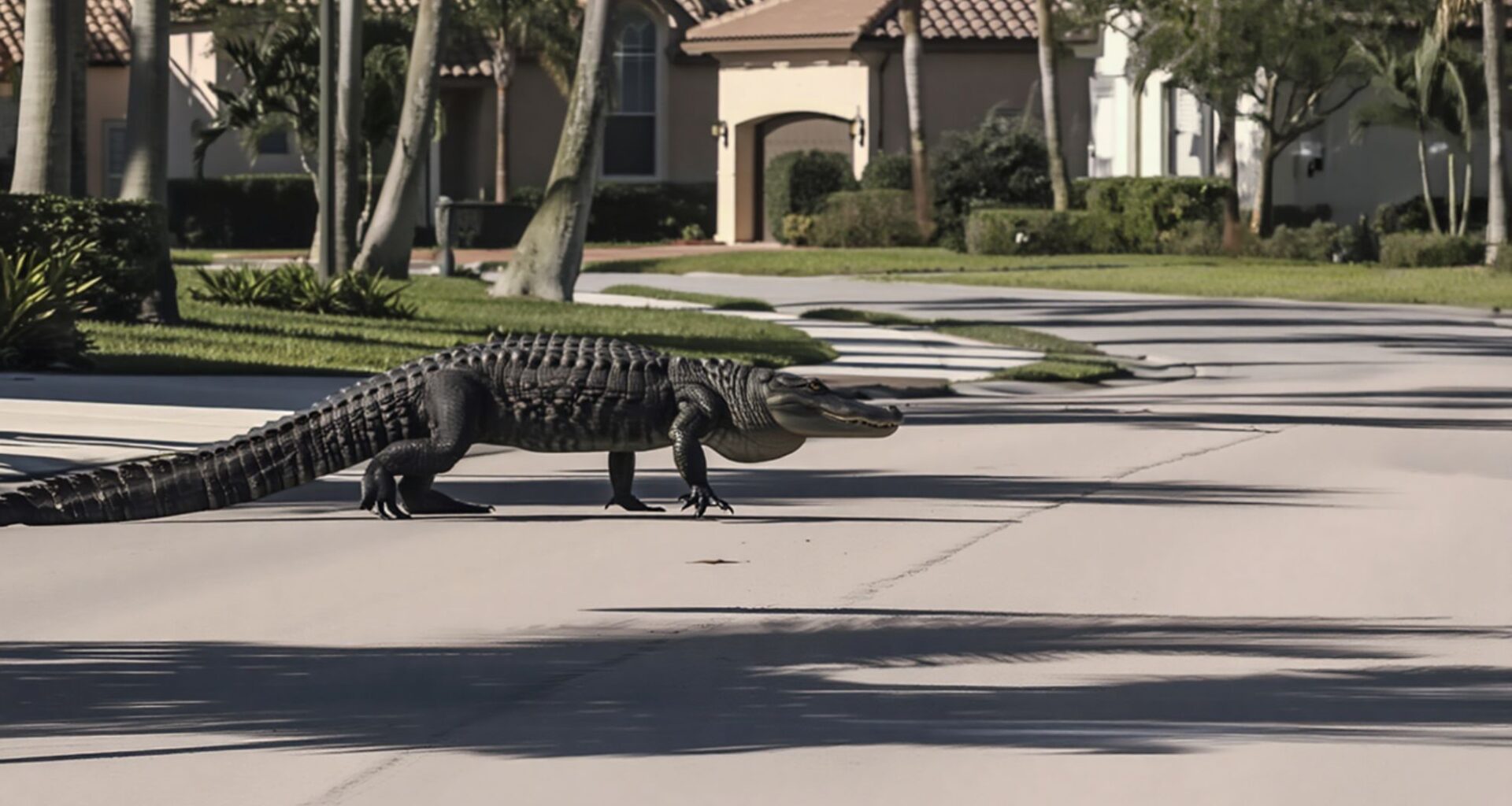Twilight has a way of making quiet streets feel wild, and lately Orlando’s cul‑de‑sacs have echoed with a very different kind of backyard visitor. Neighbors whisper about shapes in stormwater ponds, glints of eyes above the surface, and lawn chairs abandoned near the waterline. The line between suburbia and swamp feels thin, and residents are relearning what it means to live in Central Florida.
Why they’re showing up on your street
Seasonal patterns push reptiles to wander, especially during mating season when territory and partners become priorities. Prolonged heat and fast swings in rainfall move prey and water levels, drawing animals toward man‑made retention ponds. Rapid development compresses habitat, sending opportunistic predators along drainage corridors and golf‑course canals.
Experts add a simpler truth: where there’s water, there may be a gator. Decorative ponds, culverts, and backyard lagoons become stepping stones through the neighborhood mosaic. Even shallow ditches offer a passable route on a rain‑soaked evening.
What officials are saying
“We’re asking folks to treat any body of water as if a large predator could be present,” said a Florida wildlife spokesperson. “Never try to feed, lure, or harass an animal; that’s how minor curiosity becomes a dangerous interaction.” Another officer put it plainly: “If it’s long, scaly, and moving with purpose, give it the right‑of‑way.”
Authorities emphasize that most sightings end uneventfully when people keep distance. But animals conditioned by food will approach humans, a behavior that quickly turns into a removal call. “Feeding is a fast track from novelty to nuisance, and from nuisance to lethality,” one trapper warned.
How to respond safely
Think of these encounters like summer thunderstorms: predictable in pattern, but still powerful. Your best outcome begins with calm choices and a few firm boundaries.
Keep at least 50 feet of space; more if the animal seems alert. Secure pets and children well away from shorelines. Do not feed, coax, or photograph from close range. Back away slowly if a gator moves toward you. Call your local wildlife line or non‑emergency police if the animal lingers or blocks safe passage.
Comparing common yard encounters
Below is a quick look at different situations homeowners might face and how responses should differ.
Encounter type
Risk level
What it looks like
Recommended action
Juvenile under 4 feet
Low–moderate
Slim body, high curiosity near edges
Observe from afar; secure pets; report if persistent
Adult male 10+ feet
High
Broad head, slow confident movement
Clear area; keep 100+ feet; call wildlife authorities
Nesting female (spring/summer)
High
Defensive hisses, guarding shoreline nests
Leave immediately; avoid area for days; report location
Relocated gator in canal
Moderate
Skittish, moves along banks at dusk
Avoid dusk/dawn near water; document and notify if seen repeatedly
Voices from the block
“I thought it was a floating log, until the log blinked,” said a homeowner in a lakeside subdivision. “We backed away, and it slid into the water like a submarine disappearing from a movie.” A dog‑walker added, “Now I avoid the narrow paths at dusk, because that’s when they seem most active.”
Local anglers have their own etiquette, stepping wide around vegetated margins and switching to midday casts when visibility is better. “Fish the sunny bank, not the shaded nest,” one veteran advised with a knowing smile.
What not to do, ever
Temptation thrives in the age of social media, but wildlife is not a prop. Don’t stage close‑ups, toss scraps, or try to “shoo” a heavy‑bodied predator with a broom or car horn. Each of those actions teaches the animal that humans mean food or challenges, both outcomes with bleak endings.
If one settles under your deck or blocks your drive, call professionals who know the local rules and relocation limits. In many cases, removal is a last resort, and prevention is the real long‑term win.
The bigger picture
Alligators are not invaders so much as original residents, navigating a landscape we’ve paved and plumbed. They help regulate prey populations and shape wetland ecosystems, roles that keep mosquitoes and invasive species in check. Coexistence requires human habits that don’t turn curiosity into conflict.
So mind the margins of neighborhood ponds, leash the dog near evening light, and treat that glittering water as living habitat, not a backyard ornament. As one ranger said, “Respect the animal, respect the distance, and you’ll very likely never have a problem.” In a city knit by canals and lakes, that’s a compact as practical as it is wild, and as neighborly as it is wise.

